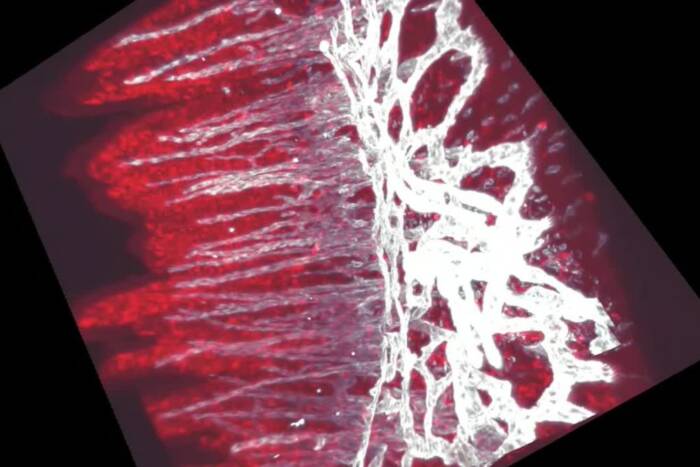Tenure awarded to Hiro Funabiki
by WYNNE PARRY
Hironori Funabiki, head of the Laboratory of Chromosome and Cell Biology, was promoted to professor and granted tenure by the university’s Board of Trustees at its June meeting. Dr. Funabiki studies mitosis, the primary type of cell division that underlies all growth, maintenance and reproduction in organisms from plants to fungi.
Growing up with two chemists, his father and grandfather, in Kyoto, the cultural center of Japan, it was natural for Dr. Funabiki to seek logic within nature. He found himself drawn to molecular biology and ultimately to the complex, highly orchestrated process of mitosis. He earned a bachelor’s degree in chemistry and a Ph.D. in cell biology from Kyoto University and did postdoctoral work in the physiology department at the University of California, San Francisco, and then at Harvard in molecular and cell biology before establishing his laboratory at Rockefeller in 2002. Dr. Funabiki was made associate professor in 2007 and his promotion to professor was effective July 1.
To successfully divide, a cell must duplicate its genetic material and segregate it into two daughter cells rapidly and precisely. Errors in the process can produce birth defects or cancer.
“There are many mechanisms that ensure the duplicate copies of the genome, packaged as chromosomes, are equally distributed between the daughter cells,” Dr. Funabiki says. “I am particularly intrigued by the phenomena in which different kinds of macromolecular machinery are rapidly built on the chromosomes and then disassembled in a highly ordered manner during mitosis to support chromosome segregation.”
This machinery includes the mitotic spindle, the dynamic fibrous apparatus that drives cell division by separating the duplicate sets of chromosomes, and the nuclear envelope, which must form around the chromosomes, separating them from the rest of the cell to support chromosome replication. Scientists have suspected that histones, proteins that provide structure for DNA, play an important role in triggering the construction of these elements. Dr. Funabiki’s lab has developed a new technique to directly manipulate histones in frog egg extract, making possible new experiments that may provide insight into histones’ role in mitosis. A series of studies by Dr. Funabiki’s lab has also unveiled a signaling cascade involving the kinases Aurora B and Haspin that puts phosphorylation marks on histones and helps restrict assembly of the spindle and the nucleus at the right time and place.
Current projects in the Funabiki lab focus on modifications to histones and other processes that affect chromosomes during cell division. For instance, he is examining how a key chemical mark on certain histones attracts proteins that generate tightly packed DNA packages known as heterochromatin, which form at the spot where spindle fibers attach during cell division. He is also interested in the attachment process itself, and in particular how the cell responds when a fiber attaches at the wrong spot. He also wants to better understand how, over generations, cells avoid losing repetitive DNA sequences found at these attachment points — the loss of these sequences can cause errors when chromosomes are segregated, a problem frequently observed in cancer cells.
“Hiro’s innovative work is helping us to understand one of the most fundamental processes of life, cell division, and how structural elements form in the cell to support the mechanical work of segregating chromosomes,” says Marc Tessier-Lavigne, the university’s president. “His research has pointed to a role for DNA-packaging proteins — histones — in regulating these processes, and has suggested means to address errors in cell division, as occurs in a wide variety of diseases.
“I am pleased to announce that Hiro has received a much-deserved promotion to full professor, and I am looking forward to seeing where his research leads.”
“The sequence of events involved in cell division must happen in exactly the right time and place,” Funabiki says. “By sorting out the details of these events, we could help develop tools to manipulate them and control fates of problematic cells that threaten human health. Rockefeller has been an exceptional place to conduct curiosity-driven basic science, and I am extremely grateful to be part of community that is moving forward to deliver new wonders to our society.”



